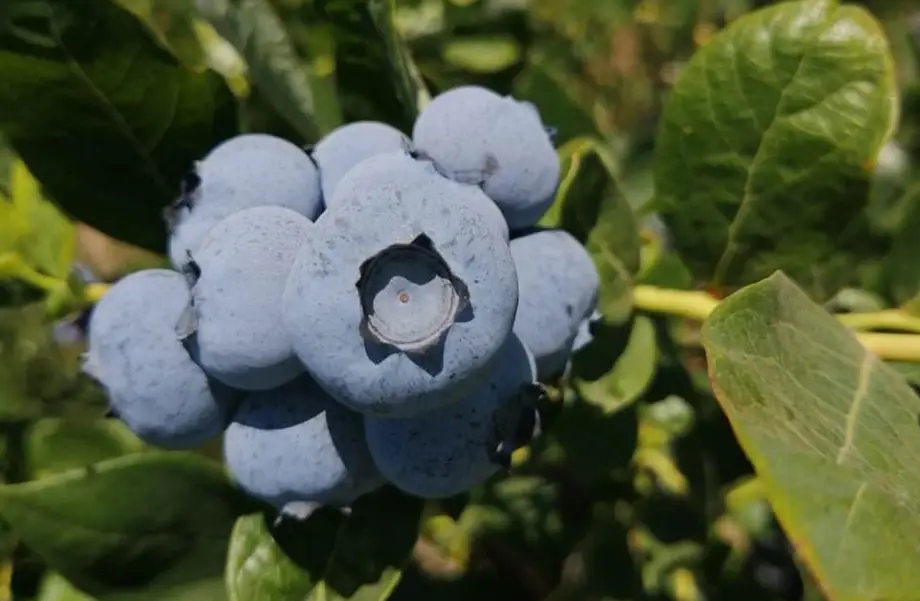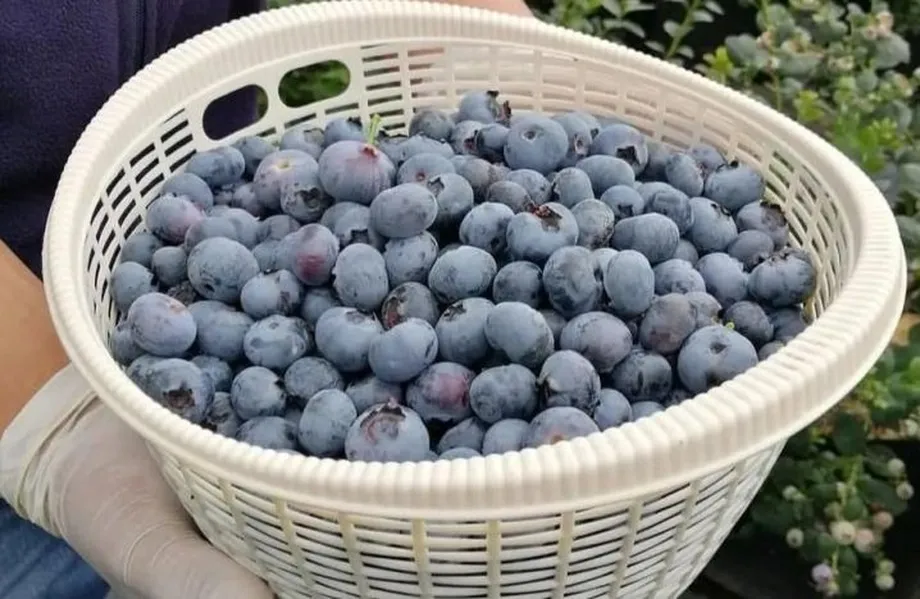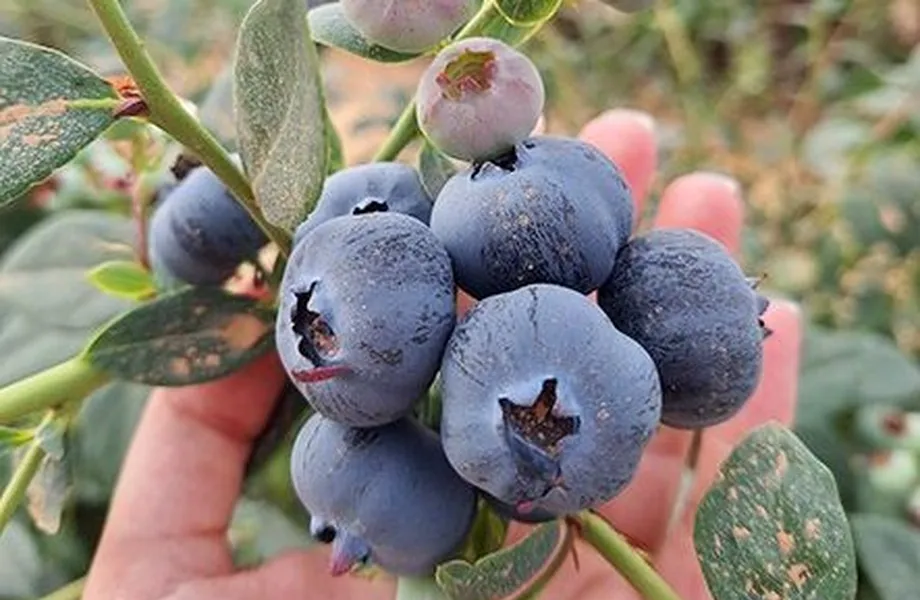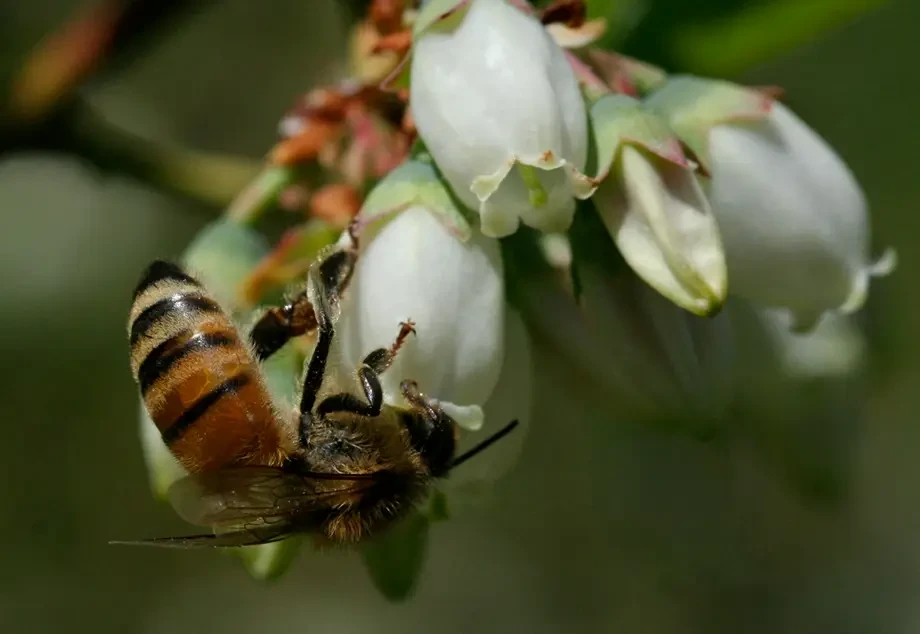A recent study conducted by researchers at Stellenbosch University (South Africa) evaluated the impact of cross-pollination and self-pollination on five blueberry cultivars: 'Emerald', 'Eureka', 'Snowchaser', 'Suziblue', and 'Twilight'. Researchers measured fruit set, fruit weight, and ripening time to assess the effects of different types of pollination.
'Suziblue' and 'Twilight' showed the greatest benefits from cross-pollination. In these cultivars, cross-pollination led to a significant increase in fruit weight, both per berry and per flower, and accelerated the ripening process.
Cross-pollination was also beneficial for the other cultivars, albeit to a lesser extent. 'Emerald' was the most effective donor cultivar, improving fruit quality in several other cultivars.

Effects of Pollination
The study highlighted that although all tested cultivars produced fruit after self-pollination, cross-pollination resulted in larger fruits, greater fruit set, and faster ripening. This outcome underscores the importance of genetic diversity and pollinator activity for optimal blueberry production.
To assess the effect of pollination on blueberries, the study measured the following parameters:
- Fruit set: calculated as the percentage of flowers that developed into mature fruits.
- Fruit weight: measured in grams, with two different parameters:
- Fruit weight per berry: the average weight of all berries formed per treatment.
- Fruit weight per flower: the average weight of all berries formed divided by the total number of flowers pollinated per treatment.
- Ripening time: measured in weeks, representing the number of weeks needed for fruits to reach full ripeness, indicated by a uniform dark blue color.
Key Findings
Although all the studied cultivars produced fruit after self-pollination, cross-pollination led to larger fruits and faster harvests in 'Suziblue' and 'Twilight'. This finding emphasizes the importance of pollinator activity and genetic diversity for optimal fruit production in blueberries.

Cross-pollination in blueberries increases fruit set and fruit weight while accelerating ripening in some cultivars. All cultivars produced fruit after self-pollination, indicating they can be planted in single blocks and still produce a harvest. However, self-pollination resulted in smaller fruits, lower fruit set, and slower ripening. This response aligns with observations in Vaccinium myrtilloides and Vaccinium angustifolium.
Quantitative Data
Among the tested cultivars, 'Emerald' was the most effective donor, improving fruit quality in many cultivars. 'Suziblue' and 'Twilight' generally benefited the most from cross-pollination compared to the other cultivars, with larger fruits and faster harvests.
'Suziblue' experienced a 38% increase in weight per berry, a 44% increase in weight per flower, and a 26% reduction in ripening time. 'Twilight' showed a 94% increase in weight per berry, a 107% increase in weight per flower, and a 28% reduction in ripening time.
Cross-pollination accelerated ripening in other cultivars such as 'Bluecrop', 'Bluegold', 'Legacy', 'Sierra', 'Toro', and 'Patriot'. In all cultivars, fruit set was similar after self-pollination or crossing, suggesting self-fertility at least in terms of initial fruit development. The larger fruits resulting from cross-pollination will enhance marketability and increase growers' revenues.
Final Considerations
Although this study used manual pollination for crossing, it is likely that insect pollinators deposit mixed pollen. As a result, even with optimal pollinator movement, the fruit quality observed in this study may not be achieved under natural conditions, as naturally pollinated flowers often receive fewer visits or lower-quality pollen from pollinators.
For example, when honeybee pollination was compared to cross-pollination, all cultivars showed a lower berry mass and longer ripening time ('Emerald' 1% decrease, 4% increase; 'Eureka' 50% decrease, 16% increase; 'Snowchaser' 21% decrease, 11% increase; 'Suziblue' 11% decrease, 14% increase; 'Twilight' 24% decrease, 14% increase).

Further research is needed to assess the relative advantages of planting mixed cultivars in an orchard and to identify the most effective combinations. Additionally, studies should determine which cultivars should be planted together, as differences in the donor cultivar can potentially influence yields. Understanding these dynamics will be crucial for improving yield and quality, benefiting growers and the entire industry.
Source: Martin, K., Anderson, B., Minnaar, C., & de Jager, M. (2024). Inter-fertility of five highbush blueberry cultivars and ideal crossing combinations. The Journal of Horticultural Science and Biotechnology, 1–11. https://doi.org/10.1080/14620316.2024.2433135
Photo: Emily May









